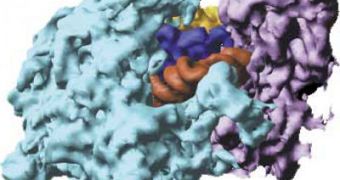Researchers from the United States have managed to surpass one of the most difficult obstacles that has stood in the way of creating the first artificial life form, when they have successfully created a ribosome, a part of the cell that is often referred to as its “factory.” It's the place where the proteins that make life possible in most creatures are born. DNA uses messenger RNA molecules to get information to the cellular factory, which then releases the needed amount of proteins for the appointed task. If artificial ribosomes can be created, then artificial life could, indeed, become a considerable possibility.
Harvard Medical School professor of genetics George Church, who has conducted the current research with just one assistant, has said in a telephone briefing that all forms of synthetic life that are to be created in the future will incorporate ribosomes, as they are one of the required conditions for life to develop and for engineered cells or tissues to be able to support themselves. Church adds that this is valid on account of the fact that ribosomes coming from different species, from man to bacteria, are all very similar.
In addition to producing much-needed proteins, they are also able to manufacture drugs and classes of proteins that cannot be found in nature in any other species of animals. This could have numerous commercial applications, on account of the fact that the traits of the ribosomes could be modified to extensively produce just one type of product, which would be most required at any given time. “We can (...) go straight into protein synthesis,” Church has pinpointed, after he has announced that he and post-doctoral fellow Mike Jewett have already synthesized the glowing protein characteristic to fireflies.
Church has also shared that, in order for any research team to construct feasible artificial life, it would take a sequence of roughly 151 genes. “One hundred fifty one genes would include enough genes to replicate DNA, produce RNA, produce ribosomes and have a very primitive membrane,” the expert underlines. In other words, these genes are enough to ensure that a potential batch of cells is endowed with all the features of life, such as the ability to heal itself, to replicate, to grow, and, eventually, to die.

 14 DAY TRIAL //
14 DAY TRIAL //